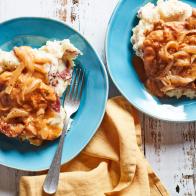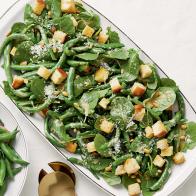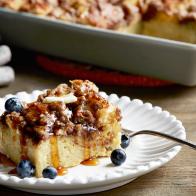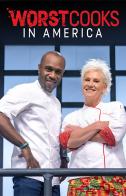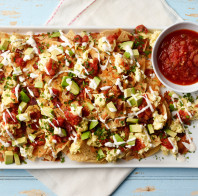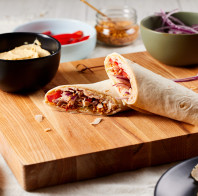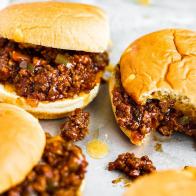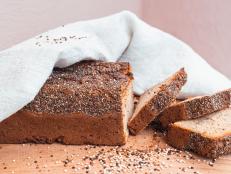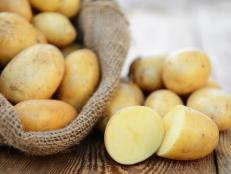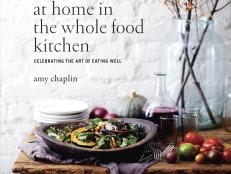What Is the Paleo Diet?
The Paleo diet (a.k.a. the Hunter-Gatherer or Caveman diet) has been around for 50 years and continues to be popular for the past decade. But should we be reverting back to what caveman ate thousands of years ago? Here’s the need-to-know about the oldest diet around.
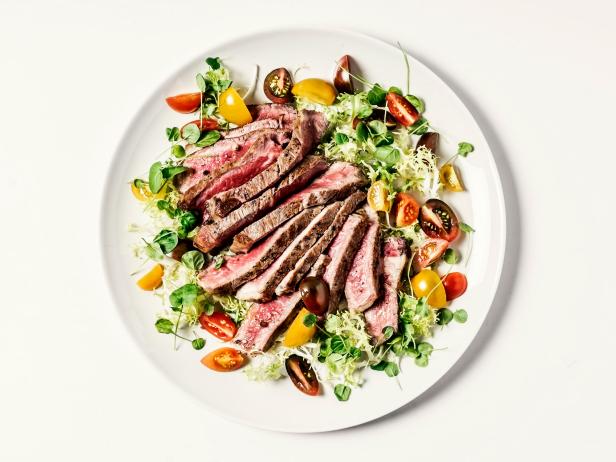
Claudia Totir/Getty
The Paleo diet suggests eating like our early ancestors did during Paleolithic times — the period before the birth of modern agriculture (about 10,000 years ago). It doesn't advocate that men hunt for meat dressed in loin cloths; rather, the diet advocates eating fewer processed foods and loads of fruits and veggies.
The creators of the book (including the grandnephew of "godfather of fitness" Jack LaLanne) claim that by following this diet you’ll get rid of acne, increase your athletic performance and become naturally lean. They also claim that increased fruit-and-veggie intake will improve symptoms of diseases like asthma, osteoporosis and high blood pressure. In 2021, US News & World Report Best Diets Ranking put this diet at number 31 out of 39 with an overall score of 2.3 out of 5. Examining the eating plan below eliminates numerous food groups which partially explains why this received such a low ranking.
What Is the Paleo Diet?
The Paleo diet encourages followers to eat lots of fresh fruits and veggies, lean meats and seafood — foods high in soluble fiber, antioxidants, phytochemicals, omega-3’s and monounsaturated fats. The diet recommends between 10 to 35 percent of your daily calories come from protein.
The diet identifies certain foods that contributing to weight gain, heart disease and diabetes and discourages dieters from eating them. These foods include refined sugars and grains (like high fructose corn syrup and white flour), saturated and trans fat, salt processed foods and yeast (like in baked goods and pickled foods). Dairy and grains (even whole grains) are also discouraged and should be replaced with fruits and veggies.
The diet gives you alternative suggestions to replace some of the discouraged foods:
- Salt: Replace it with spice combination made from ingredients such as powdered garlic, powdered onions, lime juice, salt-free lemon pepper, cayenne pepper, black pepper and oregano.
- Vinegar: Substitute with lemon or lime juice
- Butter and Fat: Instead of margarine, butter, shortening and lard, use oils such as olive, flaxseed, canola, walnut, coconut or avocado.
- Sugar: Use fruit purees flavored with lemon juice and spices (like cinnamon, ginger, vanilla) instead of any type of sweeteners. Agave nectar and honey are considered healthy substitutes, but should be eaten sparingly.
How Much Does It Cost?
A copy of the Paleo Diet book for about $15. The accompanying website has a variety of Paleo information including recipes and a free 7-day downloadable meal plan.
The real cost of this diet is the food. Although your shopping list will contain fewer processed foods, you’ll need to visit the market frequently to stock up on fresh fruits and veggies. If you’re visiting a restaurant or flying out of town, you’ll find it very challenging to find items on the menu that meet the criteria for this plan. You will find more restaurants with Paleo-friendly options, so ask your server. You’ll also have a tough time during parties and social events, unless they have Paleo-friendly options available. will probably have to bring your own food. You can now also find meal delivery services that cater to those on a Paleo diet.
Benefits of the Paleo Diet
- The diet recommends fewer processed food and lots of fruits and veggies.
- It promotes eating lean meats.
- Exercise is a must with this diet plan.
- It’s very low in sodium, which most folks get too much of.
Cons of the Paleo Diet
- This is a tough diet to follow — avoiding dairy, added sugars, and grains, including all flours, is tough. avoiding all flours and refined sugars is a challenge.
- The elimination of entire groups of food (like grains, milk and legumes) also eliminates essential nutrients from the diet.
- This plan would be very tough to follow while traveling, eating out or socializing.
- Too much scientific jargon, much of which is controversial, such as the elimination of dairy and grains from the diet.
The Bottom Line: There are many other proven ways to lose weight that don't involve eliminating most of the foods found in your supermarket.
Although this plan promotes lots of fruits and vegetables, other foods like whole grains, legumes and dairy should be part of a well-balanced diet. The impractical nature of trying to follow this diet will leave dieters stressed and impede their ability to follow this plan for the long haul.
Toby Amidor, MS, RD, CDN, is a registered dietitian and consultant who specializes in food safety and culinary nutrition. She is the author of The Greek Yogurt Kitchen: More Than 130 Delicious, Healthy Recipes for Every Meal of the Day.
*This article was written and/or reviewed by an independent registered dietitian nutritionist.
Related Links:

